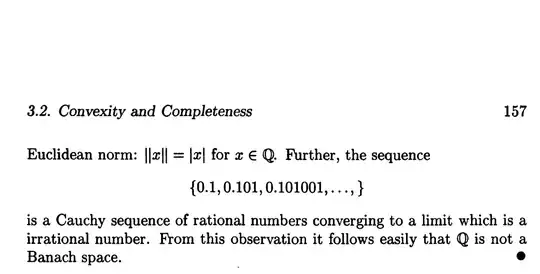Reference:- Foundations of Functional Analysis, S. Ponnusammy, $\alpha-science-2002$
Consider the sequence $\{.1, .101, .101001, \ldots\}$, prove that given sequence is Cauchy and converges to a irrational number. find the limit of the sequence.
I tried to find the generalised formula for the sequence pattern. I failed to do. $\left\{\frac{1}{10}, \frac{1}{10}+\frac{1}{10^3}, \frac{1}{10}+\frac{1}{10^3}+\frac{1}{10^6}, \ldots\right\}$. It doesn't form any geometric series. How do I prove the sequence is Cauchy without getting the rigourous expression for the $n$-th term of the given sequence? how to find the limit of the sequence?
